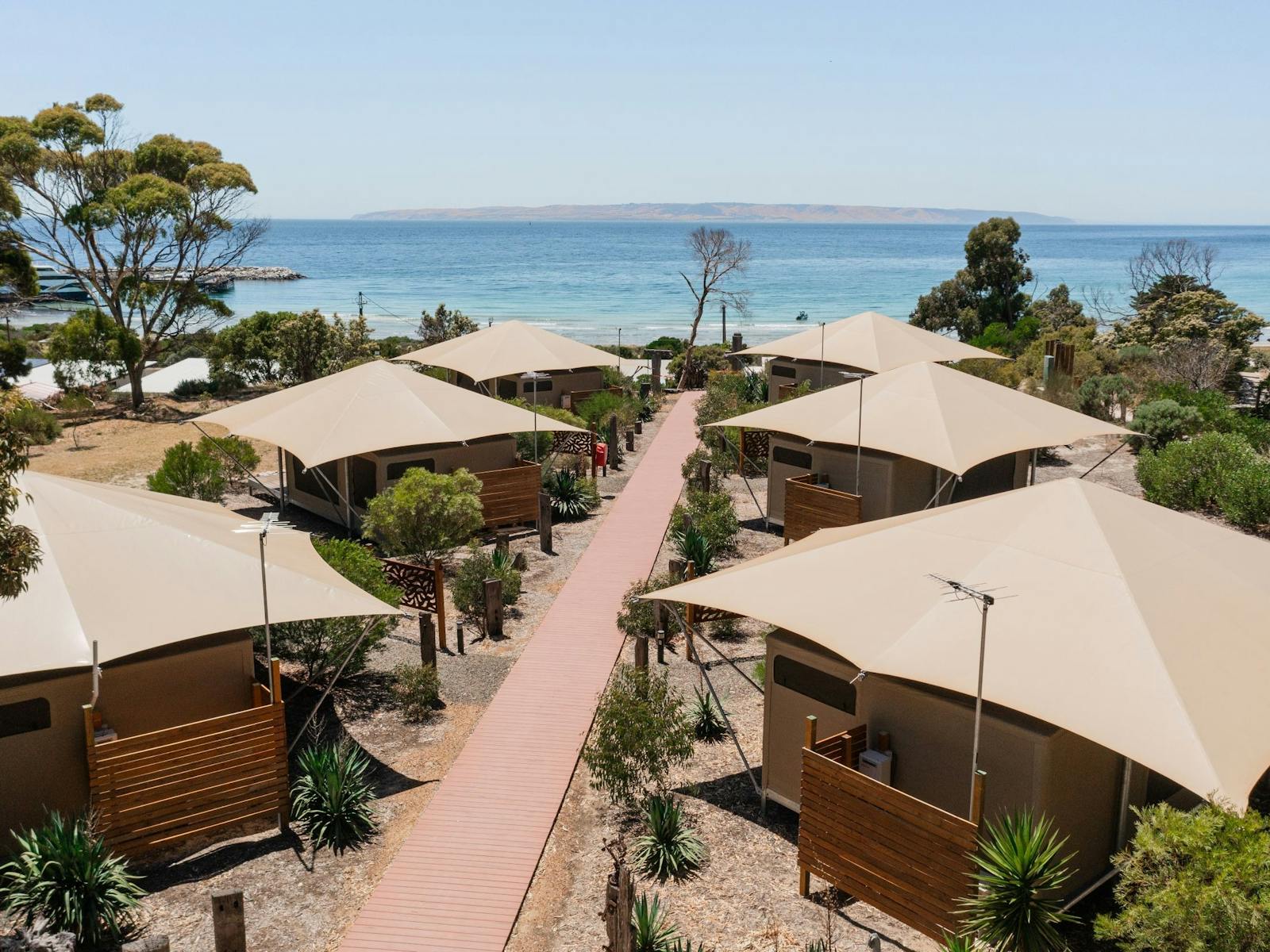Kangaroo Island has the largest remaining natural population of Tammar Wallabies in Australia. They were once common in South and Western Australia, but the loss of habitat and predation by introduced foxes and cats has devastated mainland populations. With such an abundant population on the island, visitors are highly likely to see them, they are truly a special population to observe.
Kangaroo Island Tammar Wallaby Facts
Much smaller than the Kangaroo Island kangaroos, Tammar wallabies have a dark grey coat with reddish-brown arms, feet and flanks, and distinct white cheek stripes. Adults are around half a metre tall. Tammar Wallabies tend to live in stable groups, which helps them to stay safe from predators. They are herbivorous, feeding on grasses, herbs and shrubs and live in a wide variety of habitats across the island including coastal scrub, heath, mallee and woodland thickets. The birth of young Tammar Wallabies usually occurs in late January to early February, however joeys only start to emerge from the comfort of their mother’s pouch in early winter, where they will start to spend time feeding on tender grass until they are fully weaned at around ten to eleven months old.
Where to find them
Tammar Wallabies are best seen near dawn and dusk as they are crepuscular/nocturnal, which means they are active primarily during the twilight period. With an abundant population on Kangaroo Island, sightings are highly likely, but often a fleeting glance. During the day Tammar Wallabies rest in dense, low vegetation. As the sun shifts towards the horizon, they move through tunnels in the vegetation from their daytime shelter to grassy areas to feed. Whilst commonly spotted on roadsides, the best viewing experience is to find a grassy flat near bushland and wait patiently into early evening. Some great spots include:
- Around the campsites and down towards the jetty at Vivonne Bay.
- Along the D’Estrees Bay Road up to Wheaton’s Beach in Cape Gantheaume Conservation Park.
- In the settlement at Nepean Bay, via Western Cove Road.
- Baudin Conservation Park, Penneshaw.
- Kangaroo Island Sculpture Trail, Penneshaw
- American River, Cannery Walk.
How to watch them
Tammar Wallabies are very timid. Sit quietly and watch them from a distance and you will be rewarded watching them go about their business as they move around the fringes of bushland, feeding well into the evening. If you are observing them on the roadside, please park well off the road in a safe place and be aware of traffic.
Did you know?
The Tammar Wallaby has colour vision in the blue and green spectrums and have the ability to drink sea water!














